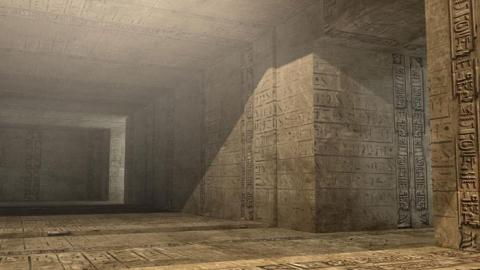“This I have actually seen, a work beyond words. For if anyone put together the buildings of the Greeks and display of their labours, they would seem lesser in both effort and expense to this labyrinth… Even the pyramids are beyond words, and each was equal to many and mighty works of the Greeks. Yet the labyrinth surpasses even the pyramids.”
These are the words of ancient Greek historian Herodotus written in the 5th century BC, describing a colossal temple said to contain 3,000 rooms full of hieroglyphs and paintings.
Based on the detailed descriptions provided by Herodotus and other ancient historians, Athanasius Kircher, a 17th-century German Jesuit scholar and polymath, produced the first pictorial reconstruction. At the center of the drawing is a maze, which is surrounded by 12 courts.
Herodotus also wrote that the labyrinth was “situated a little above the lake of Moiris and nearly opposite to that which is called the City of Crocodiles [Crocodilopolis].” Just south of the site of Crocodilopolis, at the entrance to the depression of the Faiyum Oasis, sits Hawara, an archaeological site that is home to the pyramid of Amenemhat III, the last king of the 12th dynasty (c 1855-1808 BC).
William Flinders Petrie made a significant discovery at the site of the Hawara pyramid in 1889 - an enormous artificial stone plateau which he interpreted as being the foundation of the labyrinth. He concluded that the labyrinth itself must have been destroyed in antiquity and that all that was left was the stone base.
In 2008, the Mataha Expedition explored the site with Ground Penetrating Radar and other non-destructive geophysical techniques and rediscovered large parts of the labyrinth next to the Hawara pyramid of Amenemhet III. You can download and read the 2008 report HERE.
Several researchers and digital artists have taken the ancient texts and the results of past and modern archaeological studies to create 3D reconstructions of what the ancient Egyptian labyrinth may have looked like. The following videos provide some examples.
Ancient Labyrinth Reveal from MoF_NTU on Vimeo.
Discover more about the most recent discoveries concerning the ancient Egyptian labyrinth in the article ‘The Lost Labyrinth of Ancient Egypt’ available in the November-December 2022 issue of Ancient Origins Magazine. Get it here!
By Joanna Gillan




